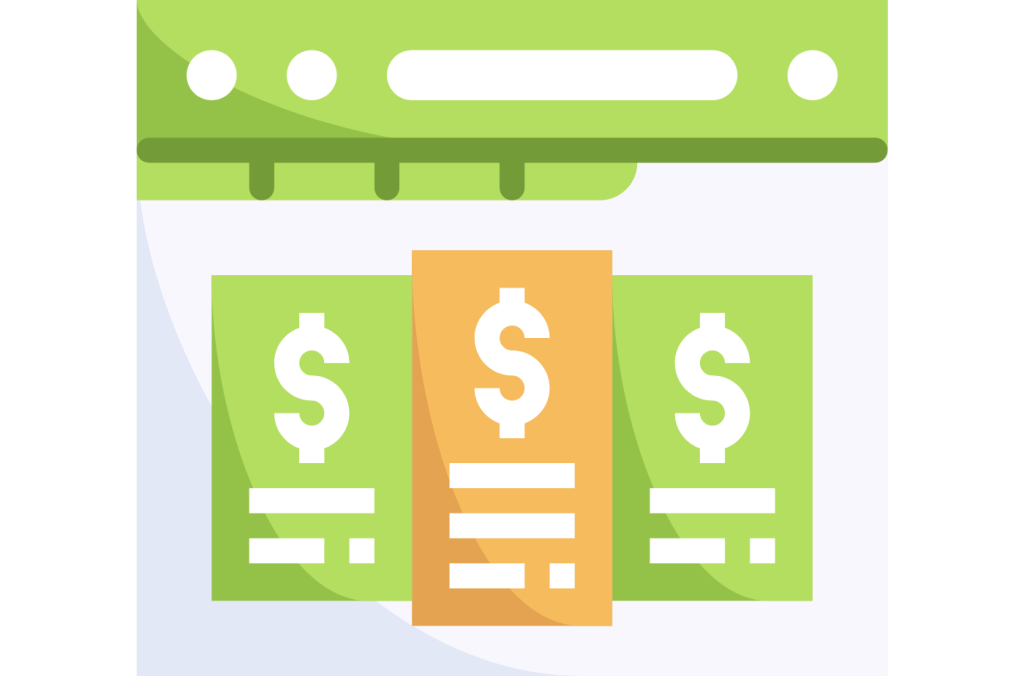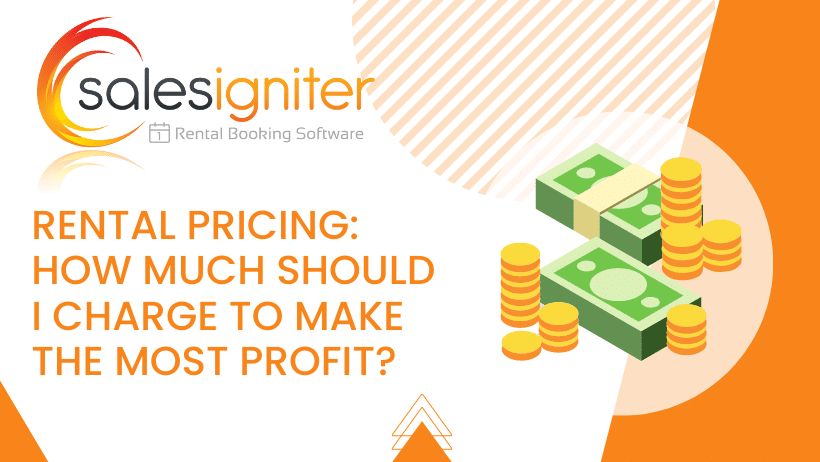You can make a sizeable profit by offering cars, boats, AV equipment, event venues, and other things for rent. But you will be more successful if you understand how to price your rentals. You must set rental prices based on how long someone will rent something for, the time of the week or year when someone will rent your item, and the general value of whatever you offer for rent.
How to Set Rental Prices
The goal of setting rental prices is to produce something reasonable and appealing to your prospective clients without losing money. While you might feel tempted to charge a high amount for a rental, doing so could cause long-term vacancy. You don’t want the price to be too low either, as a low price will harm your bottom line.
Your rental price should be something reflective of the value of your item for rent and the demand people have for the item in question. You may have an easier time getting a profit if you provide a sensible rate based on these two factors.
What Factors Are Essential To Note?
There are many useful factors to review when looking at how you’re going to set a rental price for anything:
- What is the value of the item you’re renting out?
- What are other parties in your area charging for rent for similar items?
- What is the demand for your item for rent? The time of year and local economic climate could both dictate this point.
- How much do you spend on expenses for whatever you’re renting? These expenses include applicable loan payments, maintenance costs, taxes and fees for ownership, and any costs associated with managing your property. Anything you spend on paying staff members, rent, or marketing expenses can also be applied here.
- Do you have any outstanding features in whatever you’re offering that might make your items more viable? An event venue with on-site parking might be worth more than a venue that doesn’t have this feature, for example.

Review Your Competitors
You can start reviewing how much you should charge for rent by looking at what your competitors in your local area are charging. If you have a property you can rent out for events, you can review what other landlords and property owners are charging for rentals and use this to start.
Not all competitors will provide direct information on how much they charge for rentals. You might have to request a quote for services. For example, you could tell a company that rents AV equipment that you have specific needs and that you have a particular budget to work with when getting these items ready.
Is the 2% Rule a Good Factor?
One common idea people use when setting up rental prices is the 2% rule. This rule states that the rent cost for something should be about 1 to 2 percent of the value of whatever someone rents.
While this sounds reasonable, it could make it harder for you to achieve a profit for two reasons. First, the value of your item for rent might change after a while. A property can rise in value depending on the market, while a vehicle will drop in value as it ages and takes on more miles.
Second, there may be times when the demand for something could be higher. For example, a car rental might be in higher demand during weekdays, so you could charge more during those times.

How Do Popular Rental Websites Set Their Pricing?
Various rental websites will set their pricing with a few steps:
- First, a website will set a base rate based on a percentage of the value of the rental.
- A website will then review things of interest surrounding the item for rent and add premiums based on what it feels is more valuable. A car rental website might charge a little extra for renting an electric vehicle because it doesn’t require as much gas for use, for example.
- The timeframe will also dictate the pricing plan. A property rental website may charge extra to rent out vacation homes on weekends, for instance. A boat rental company may charge more for weekend rentals, while a car rental group can charge extra on weekdays.
- Some additional surcharges for insurance policies may also apply. A rental car or boat may come with an insurance surcharge worth a few dollars each day, for example.
A Suitable Formula For Rental Pricing
You can use a reasonable formula for determining how much you’re going to charge for a rental:
- Take 1% of the value of whatever you are renting out.
For example, if you have a car worth $20,000 that you want to rent out, you can take 1% of that car’s value to get $200.
- Calculate the expenses you have for your rental property and add that to the 1% you calculated. These include maintenance costs, hiring people to run something, and anything else of value.
For a car, you can review how much you spend on insurance, gasoline, and other inspection and maintenance costs. You can add those to the value of the rental if you wish. For a vehicle that costs $500 to maintain each month, you can add that total to the $200 in the earlier example to get $700.
- Review the number of days someone will use the property. Divide the total you’ve calculated so far by 7 to get an analysis of how much you should charge per day.
You can divide the total of $700 by 7 to determine that it will cost $100 per day for someone to rent your vehicle. You could reduce that daily cost if someone spends more days with that vehicle, or you could increase the price if the scheduled demand is higher.
How Can You Increase Your Rental Profits By 30%?
You can boost your rental profits by as much as 30% if you use a sensible plan for work. You should assume that at least 30% of the money you earn from a rental will go towards expenses.
There are many things you can do to increase your rental profits:
- Provide outstanding customer services to your customers. People will likely refer your business to others if satisfied with your service.
- Offer additional services for a rental. You can offer setup and takedown services for AV equipment at an additional cost, for example.
- Establish partnerships with businesses and organizations in your area that might be interested in regularly using what you have, ensuring your rental items won’t stay idle for long.
What Will You Do When Selling Your Rental Equipment?
After a while, you might need to remove your rental equipment from service because it is getting older or is not as useful as something new. You’ll need to review how much you will sell your rental item for when it is no longer of use to you.
The goal for selling your rental items is to try and get about half as much as what you spent on them in the first place. The total should be enough to cover many of your expenses while also helping you get started in finding a viable replacement.
When Should You Remove Your Things From Service?
You can use a few points for dictating when you’re going to remove your old items from service:
- Review what other parties are renting out when compared with yours. If your equipment or other assets are outdated compared to what the competition offers, get ready to sell and replace your items.
- Look at how often people are renting your items. You could sell your old items if you notice what you have isn’t being rented out often. This point is especially true if the value of something is dropping to where you’re not making as much off something as you used to.
- For vehicles, remove them from service after about three to five years. You can sell a car when it reaches 30,000 to 40,000 miles, for example. That mileage is around the same one where car rental companies will sell their equipment.
Ideas to Consider For Increasing Profits
You can also increase profits by adding these optional rental pricing points:
- Include add-ons like a free car wash for a rental car or additional pieces of AV equipment to go with specific items.
- Insurance policies can be made available for a few dollars a day. A policy will protect the renter from any unintended harm to whatever one is renting.
- Memberships can allow people to have access to certain things at any point in exchange for a set membership fee someone pays each week or month.
- You can also sell various items to people, like recreational equipment for use at a vacation rental home.
Is It A Good Idea To Negotiate Rates With Your Clients?
You can negotiate rental rates with clients if you wish, but be sure you understand your local market and economic climate when doing so. You can afford to reduce rates when the market is active and you’re more likely to earn money regardless of what happens.
But in cases where you do negotiate, try to get a long-term deal going with a client. You could offer a membership or lease on something where a person spends more in the long run but still has access to your items for rent.
Showing Retail Pricing
The last point to consider for offering rentals involves whether you should be showing your pricing rates on your website. While doing so can be advantageous in how it keeps you transparent and lets people know what they will spend, there’s also the concern that rates can be flexible. Your pricing rates might change based on the time of the year, the demand for something, and how the value of the asset you rent out might change.
Not sure what rental business you should start? Try checking out our new 100 ideas for starting a new rental business guide.


